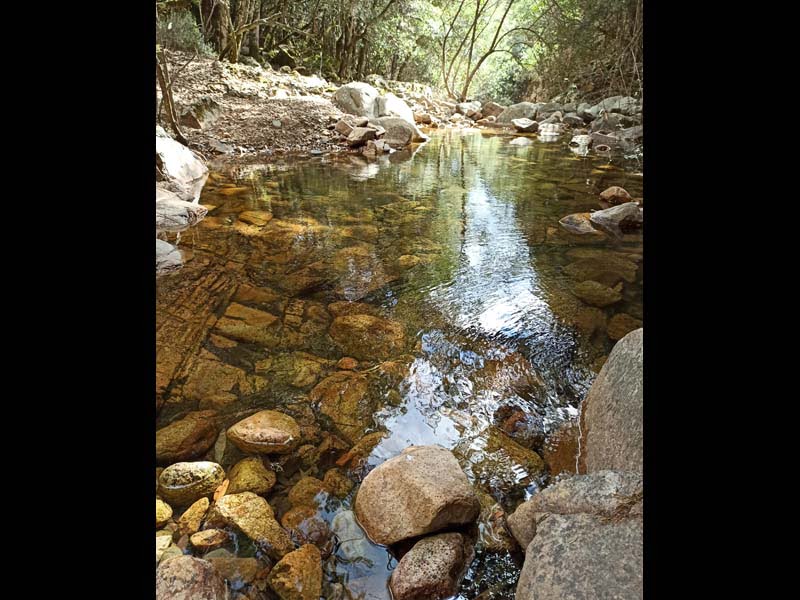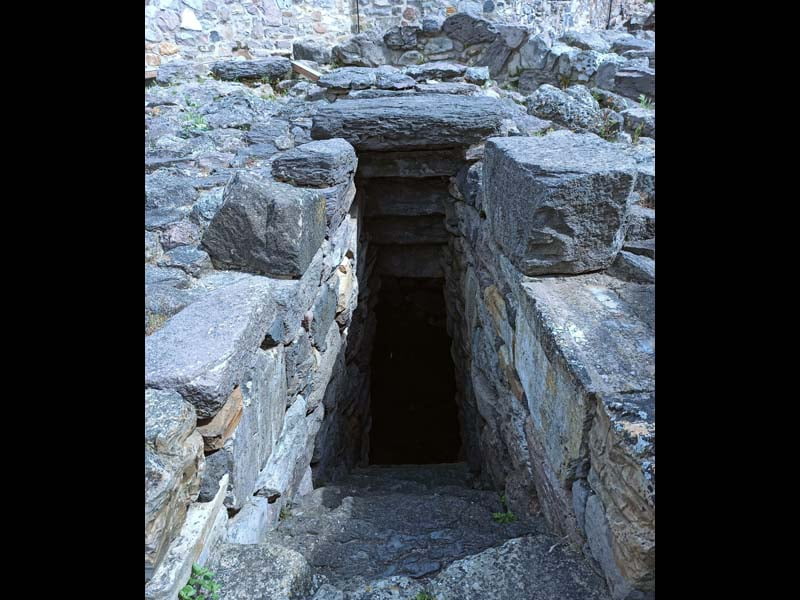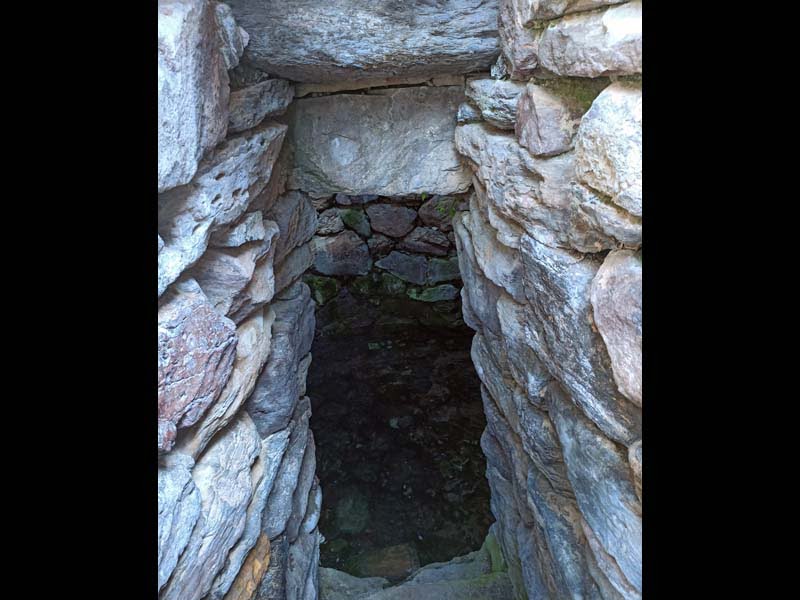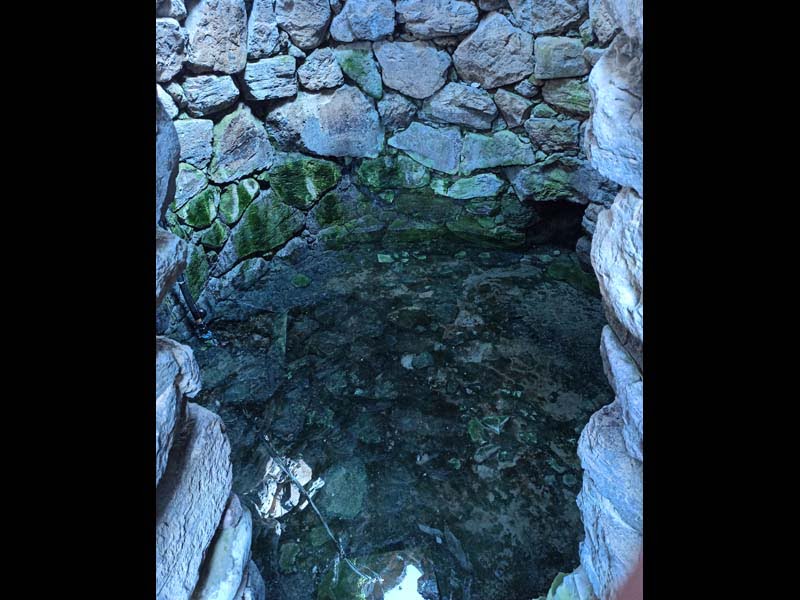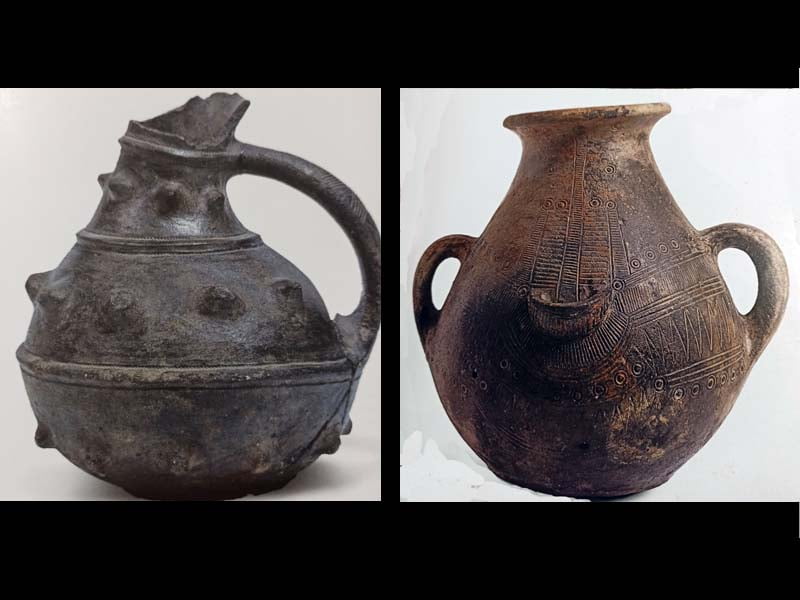di Manuela Orrù
Living the experience of descending into a Sacred Well is certainly something capable of bringing out new or perhaps just forgotten emotions, buried under layers of millenary culture that has distanced us from those people who, with so much trust, passion and care, built them .
Slowly descend the steps that lead us to the bottom of the well, after having traveled the paved road present in many sites, feeling the stone walls that surround us on the sides, walls that gradually narrow as we descend, until we reach the heart , where the widening well welcomes us with its cool and humid shade.
An ancient silence surrounds us, the light arrives filtered, like the sounds from outside, the sensation is of being in a "centre" which can be the beginning and the end, birth and death, but also regeneration.
And here is the water!
Sacred water that comes from the subsoil, from the womb of the Mother, primary source water of life. That and only that is sacred water, Acqua del Pozzo Sacro which is, together with the nuraghe, mediator of the Goddess, typical sacred architecture of the ancient matriarchal eras. No god or goddess of water for those populations, who have known a Sardinia rich in woods and luxuriant forests, an island of rivers and springs, embraced by the sea. Far away is the image of drought and thirsty land, a legacy of the savage deforestation of recent centuries. If they had wanted to worship waters, they would not have needed to build wells. The archaic, aniconic sacredness of the ancient Sardinian populations was the furthest there could be from an animistic and naturalistic creed such as the cult of water. Theirs was a complex, articulated religion, rich in symbols, rituals and architectures. Water still represented the Mother, its chthonic meaning and sacred value arise from that symbology.
Water, therefore, as a symbol of the Sacred which brings us back to the world of the Goddess; that of the Sacred Wells was used for the rituals and ceremonies typical of the world of the Goddess. A lot of bibliography supports this idea, perhaps a little less the archaeological one, certainly the study of religions and the new psychoanalytic currents recognize in the wells and in the "cistern" temples the sacred places dedicated to the cult of the Mother Goddess.
The ancients were not interested in the hydrogeological cycles and chemical-physical phenomena of water, what mattered to them was its symbolic, magical, mystical and therapeutic value. And this not only in Sardinia, but in every corner of the ancient world.
That water was therefore sacred and ascended to sacredness due to its value and symbolic content, it was, in all likelihood, the mythical incarnation of the primordial substance from which life was born, the essence itself of life. Ancient peoples had a mystical, prescientific and preoedipal psychology. Certainly they used water for their daily practical needs, but in the Sacred Wells it became a symbolic substance of the same nature as the Goddess, pilgrims and supplicants turned to it to purify, heal and regenerate. The rite was celebrated through the water, it allowed the symbolic mediation, together with the sacrifice, to access the "other world", the Sacred Archaic of that ancient people. While the waters of rivers, streams, veins and springs, rain and mountains, all those waters available for every need could not be the symbol for getting in touch with the Goddess and her sacred world, the one coming from the vein deep in the heart of the Earth, kept in the Wells, it became a metaphorical mediator of divinity. Just as even today the water of the baptismal font is not just any water, it is made "holy" to bring beneficial and saving effects, but it is not the divinity.
It is possible that in the rituals that water was drawn and drunk due to its recognized healing powers (“aqua de is dolus” of the Well of Santa Anastasia) but it is impossible that the water in itself was simultaneously the Divine and then acted as a symbolic mediator. And it is on this point that it is important to be clear and avoid the misunderstanding once and for all: the signifier (water) cannot be confused with the signified (divinity).
I go back inside the well, I immerse my feet in the sacred water that flows from the depths of the earth, the priestess and the priest welcome me and with a jug surrounded by many nipples, decorated with mysterious designs, they pour water on my head. I close my eyes. The precious liquid runs down my face, neck, slips between my breasts, reaches the center where my moon water flows, damp musk holds it. Purify me, heal me, bring me back to your world of peace and, embracing me, cradle me in your womb, O Mother, so that tomorrow I can be reborn to new life. So be it.
Manuela Orrù, 2022
REFERENCES
- George Baglivi – The sacred in the Nuragic age – Graphics of Parteolla 2005;
- Franz Baumer – The Great Mother – ECIG Genoa 1995;
- Jean Shinoda Bolen – Passage to Avalon – Piemme – Casale Monferrato 1998;
- Jurgen Thinner – Kunst Der Sarden – Hirmer 1983.
- Archeology in Sardara: from Santa Anastasia to Monreale - in "Didactic notebooks of the Superintendency for Archaeological Heritage of the Provinces of Cagliari and Oristano” – n.11 – 2003.

